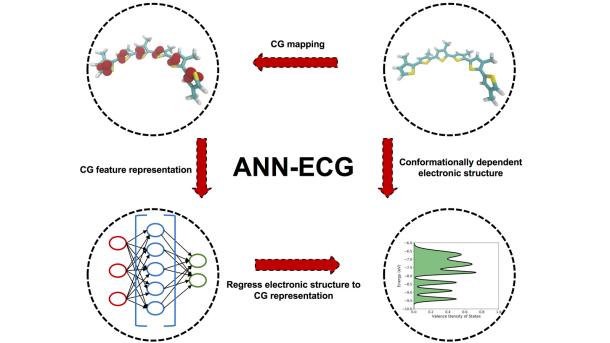
Precision organization in synthetic materials — from the molecular scale to the macroscopic, driven by information content built into the assembling constituents, and guided by designed external influences such as patterns, templates and fields — is a grand challenge of materials science.
Synthetic organic material scientists have not yet systematically deployed the range of interactions used in biology to create functional soft materials, nor are they limited by biology’s constraints of compatibility with evolutionary survival. We can seek to go beyond biology and simultaneously capitalize on information derived in part from biology. To that end, the Center for Molecular Engineering (CME) has assembled a team with deep expertise in synthesis, characterization, theory and computation. CME’s pursuits in soft matter include:
- Exploring how electronic charges placed in specific sequences along polymer chains affect their behavior.
- Utilizing patterned surfaces to direct the assembly of charged polymer electrolytes and characterizing the concomitant ion and charge transport properties.
- Employing chemically patterned surfaces to control the 3-D assembly of chiral liquid crystalline materials.
- Exploring how mass, charge, heat and ions move through polymeric materials.
- Accessing cellulose nanocrystals (CNCs) and cellulose nanofibers (CNFs) from the bioenergy crop Miscanthus x Giganteus and investigating these green nanomaterials in polymer nanocomposites, polymer membranes and in the formation of nanoemulsions an nanolatexes for coating applications.
- Precise synthesis of polymeric materials with well-defined molecular weight, microstructure (sequence and tacticity), architecture, and functional group location.
- 3-D construction of high-performance zwitterionic or hetero-charged polymer nanocoatings for achieving anti-scaling in water treatment and anti-fingerprint on touch screens.
- Charge carrier control by use of multifunctional polyionic liquids-based ionogels as high capacitance gate dielectrics for plastic electronics and health-related devices.
- Directed self-assembly of chiroplasmonic nanostructures for next-generation nano-metamaterials and understanding of chirality transfer from a molecule to an assembly.
- Structural and dynamic characterization of soft interfaces through neutron and X-ray scattering techniques, with a special focus on energy-resolved resonant X-ray scattering.
